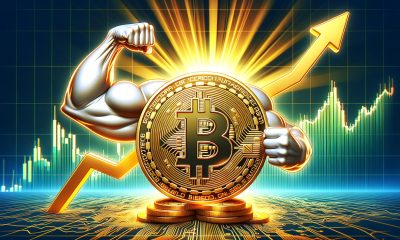Bitcoin
OKX Chief Marketing Officer Highlights Economic Dangers of a US Strategic Bitcoin Reserve

Bitcoin enthusiasts have long touted the creation of a strategic Bitcoin reserve as a hedge against inflation that can reduce the national debt and reinforce the United States’ position as a global financial leader.
Its implementation could also unleash several damaging effects on the US economy, with consequences rippling across the globe. BeInCrypto spoke with Haider Radique, the Chief Marketing Officer at OKX Exchange, to break down the risks of creating a strategic Bitcoin reserve.
Strategic Bitcoin Reserves Grow in Popularity
The concept of a strategic Bitcoin reserve has gained notable popularity over the years, both in the United States and worldwide.
A strategic reserve is a stock of crucial resources acquired by the federal government that can be used to address significant supply disruptions. Many crypto enthusiasts have been campaigning for governments to adopt Bitcoin as a strategic reserve.
In the United States, 15 states have already introduced or passed bills to do just this. Republican Wyoming Senator Cynthia Lummis was one of the first politicians to introduce this type of legislation at a federal level.
Lummis calls for the US Treasury to acquire one million Bitcoin over five years in her proposed BITCOIN Act. The Bitcoin reserve would be kept intact for at least 20 years.
Countries like Germany, Switzerland, Russia, Brazil, and Poland have also taken steps in the same direction. However, several major players in the finance industry fear intense economic instability and pervasive market volatility if a strategic Bitcoin reserve is created.
This fear is particularly relevant if the United States were to establish such a reserve, given its role as the custodian of global trade and issuer of the world’s reserve currency.
“On its face, the idea of a Bitcoin National Reserve seems like a good one – it would serve as an endorsement of Bitcoin by the United States, and it would certainly have the potential to ignite markets in the short term. But if you look under the hood, there may be a number of downsides that should cause the industry to pause and reflect on potential negative long-term consequences,” Radique told BeInCrypto.
Understanding how a reserve works is vital to comprehend the associated risks.
Bitcoin Stockpiles vs. Strategic Bitcoin Reserve
With Donald Trump as the new US president, Bitcoin enthusiasts are bracing themselves for a real shot at creating the long-awaited reserve.
Two weeks ago, Trump signed an executive order to establish a national digital stockpile. The order called for the creation of a working group to explore this possibility. The group has until July to submit a report on the criteria for such a stockpile.
Some participants in the crypto community were disheartened by this move, given that the nature of the order was particularly distinct from a Bitcoin reserve. While the concept of a stockpile derives from seized assets mainly produced from illicit activity, a reserve implies purchasing additional Bitcoin.
The United States already has the biggest Bitcoin stockpile in the world. The federal government holds at least 198,800 BTC acquired through government seizures, currently valued at approximately $19 billion. Countries that trail behind it are China, the United Kingdom, El Salvador, and Ukraine.

A Bitcoin reserve, by contrast, would require the purchase of more Bitcoin. Lummis proposes this approach in her BITCOIN Act. According to her plan, Bitcoin would be directly linked to the US dollar in order to bolster the currency. Essentially, this vision entails a monetary system where Bitcoin takes on an active role.
The pressing need to introduce such a drastic change to the United States’ current monetary system remains unclear.
Debate Over Bitcoin’s Role as a Reserve Asset
Returning to the definition of a strategic reserve, the federal government purchases these commodities in times of economic need. Most economists refer to the Strategic Petroleum Reserve as a key example of the concept.
In 1975, President Gerald Ford created the reserve when Arab members of the Organization of Petroleum Exporting Countries (OPEC) imposed an oil embargo against the United States that sent shockwaves throughout the American economy.
The legislation mandated the storage of up to one billion barrels of petroleum, recognizing its critical role in the economy. Without petroleum, economic activity would cease.
These reserves continue to serve a critical purpose. In response to the Russian invasion of Ukraine, President Biden recently tapped into these reserves to ease the strain on energy prices.
On the other hand, Bitcoin does not serve a critical purpose that warrants this sort of urgent stashing, nor is its use crucial to the functioning of the US economy. Its role as a strategic asset remains largely unclear.
Furthermore, acquiring large amounts of Bitcoin would likely lead to significant market volatility rather than economic stability. If the United States were to purchase large quantities, it would quickly reduce the supply available on the market.
“If the US government decided to acquire large swathes of Bitcoin, the short term liquidity in markets would be constrained, which could entail massive volatility in both directions. We should remember that the vast majority of Bitcoin addresses –nearly 72% according to CoinMarketCap– are long-term holders of more than one year. A mass acquisition of Bitcoin could therefore constrain liquidity further in the short term,” Radique explained.
These sharp movements in Bitcoin supply would also worry investors.
Impact on Dollar Confidence
If the United States were to create a strategic Bitcoin reserve, investors could interpret this as the federal government deciding to back the US dollar with the digital asset rather than gold. In other words, the US would send signals of a loss of confidence in the current dollar-based system.
In a recent opinion article, Nic Carter used this argument to advocate against creating a Bitcoin reserve.
“The US considering a near term abandonment of the current, relatively stable monetary system and replacing it with a monetary standard not based on gold, but a highly volatile, emerging asset, would cause utter panic among its creditors. In my view, if we even got close to a Lummis-style reserve, markets would anticipatorily start to go berserk, and Trump would be forced to withdraw the policy,” he stated.
The same effect would occur if the United States chose to sell part of its Bitcoin reserves.
Liquidation Risks
If the United States were to purchase additional Bitcoin, it would also choose when to sell it.
“Despite the emergence of bipartisan support for crypto in the US political system recently, government policy can change quickly. Therefore, as circumstances change over time, the concentration of large amounts of Bitcoin on a country’s balance sheet could represent a liquidation risk,” Radique told BeInCrypto.
Previous instances where governments sold portions of their Bitcoin stockpile holdings have shown how such actions can significantly impact the market.
“We only need to look to last year, when the German government sold around 50,000 BTC, to see what such a move could do to markets. This is often cited as a key downside of a strategic Bitcoin reserve by critics,” Radique added.
Germany sold all of its Bitcoin holdings last July to comply with a federal law that mandates the liquidation of seized digital assets. The large Bitcoin sell-off in a short period caused the price of Bitcoin to drop.
In November, a similar situation occurred in the United States when the government transferred over $2 billion in Bitcoin to third-party wallets. This move sparked price drops and raised concerns among investors about potential future auctions.
Questions would also arise over the implications of the federal government’s ownership over such large amounts of Bitcoin.
Concerns Over Centralization
For many, the idea of a strategic Bitcoin reserve could appear to conflict with one of Bitcoin’s core principles: decentralization.
This philosophy, which lies at the heart of Bitcoin, ensures that no single entity can control the entire network. However, if the US government were to start acquiring Bitcoin in large volumes, it could spark concerns about centralization.
If the US Treasury were to control a significant portion of the Bitcoin supply, it could influence the market. Such control might allow the government to impact Bitcoin prices, which goes against its decentralized nature.
Overregulation risks also arise as institutional adoption of digital assets expands across public and private sectors.
“It is our collective responsibility as Bitcoiners to advocate for this technology to be as accessible as possible while preserving its original philosophy and peer-to-peer utility,” said Radique.
As the debate over the adoption of a strategic Bitcoin reserve continues, a measured approach will benefit its implementation.
The Case for Patience
One reassuring aspect of this ongoing debate is the understanding that expediting the process might be unnecessary. Since Bitcoin is not an essential commodity for the proper functioning of the US economy, establishing a strategic reserve is not an immediate priority.
Bitcoin has existed for less than two decades. Allowing the market more time to mature also reduces the asset’s volatility in the long run.
“Bitcoin has gone from a little-known cypherpunk invention to a global cultural phenomenon and accessible, institutionalized asset in a remarkably short time,” Radique explained.
By taking a wait-and-see approach, Bitcoin could evolve into a more reliable and liquid asset, making it a viable option for the US government to include in its portfolios in the future.
The post OKX Chief Marketing Officer Highlights Economic Dangers of a US Strategic Bitcoin Reserve appeared first on BeInCrypto.
Bitcoin
What Does This Mean for Altcoins?

Bitcoin’s (BTC) market dominance has surged to 64%, reaching its highest level in over four years.
However, experts remain divided on what this means for the future. Some predict an impending altcoin season, and others caution that Bitcoin’s dominance could continue to suppress altcoins.
What Does Bitcoin’s Rising Dominance Mean?
For context, Bitcoin dominance (BTC.D) refers to the percentage of the total cryptocurrency market capitalization that BTC holds. It is a key indicator of Bitcoin’s market strength relative to other cryptocurrencies. A rising dominance suggests that Bitcoin is outperforming altcoins, while a decrease may signal growing interest or investment in other digital assets.
The metric has been steadily increasing since late 2022. As of the latest data, it surged to 64%, marking highs last seen in early 2021.

Notably, Benjamin Cowen, founder of Into The Cryptoverse, highlighted that the number is much higher when excluding stablecoins.
“Excluding stable coins, Bitcoin dominance is now at 69%,” Cowen revealed.
The rise in Bitcoin dominance has sparked debate among analysts about its implications for altcoins. Cowen believes there will be a correction or downward movement in altcoins before any substantial gains can be expected in the market. This implies that the altcoin season may not be imminent yet.
“I think ALT/ BTC pairs need to go down before they can go up,” he stated.
Nordin, founder of Nour Group, also expressed caution. He stressed that Bitcoin dominance is nearing the levels seen during the peak of the 2020 bear market.
“This isn’t just a BTC move. Its capital rotating out of alts,” he noted.
Moreover, Nordin warned that a break above 66% could intensify selling pressure on altcoins. This, in turn, could delay the altcoin season.
“Bitcoin dominance back to 64%. No Alt seasons in 2024 or 2025,” analyst, Alessandro Ottaviani, predicted.
On the other hand, analyst Mister Crypto predicts that Bitcoin’s dominance may follow a long-term descending triangle pattern. A descending triangle typically suggests bearish momentum, where the price or dominance gradually decreases as lower highs are formed.
However, this could prolong its market control before a broader correction allows altcoins to gain traction.

Another analyst mentioned that Bitcoin dominance is currently testing the resistance zone between 64% and 64.3%. Therefore, a possible retracement may be on the horizon. Should this retracement occur, altcoins could begin to gain traction, with some potentially emerging as top performers in the market as capital shifts away from Bitcoin.
“However, a breakout from this zone could mean further declines for alts,” the analyst remarked.
Finally, Junaid Dar, CEO of Bitwardinvest, offered a more optimistic view. According to Dar’s analysis, if Bitcoin’s dominance drops below 63.45%, it could trigger a strong upward movement in altcoins. This, he believes, would create an ideal opportunity to profit from altcoin positions.
“For now, alts are stuck. Just a matter of time,” Dar added.
Tether Dominance Signals Potential Altcoin Season
Meanwhile, many analysts believe that the trends in Tether dominance (USDT.D) signal a potential altcoin season. From a technical analysis standpoint, USDT.D has reached a resistance zone and may be due for a correction, suggesting the possibility of capital flowing from USDT into altcoins.
“The USDTD is in a rejection zone, as long as it does not close above 6.75% it will be favorable for the market,” a technical analyst wrote.
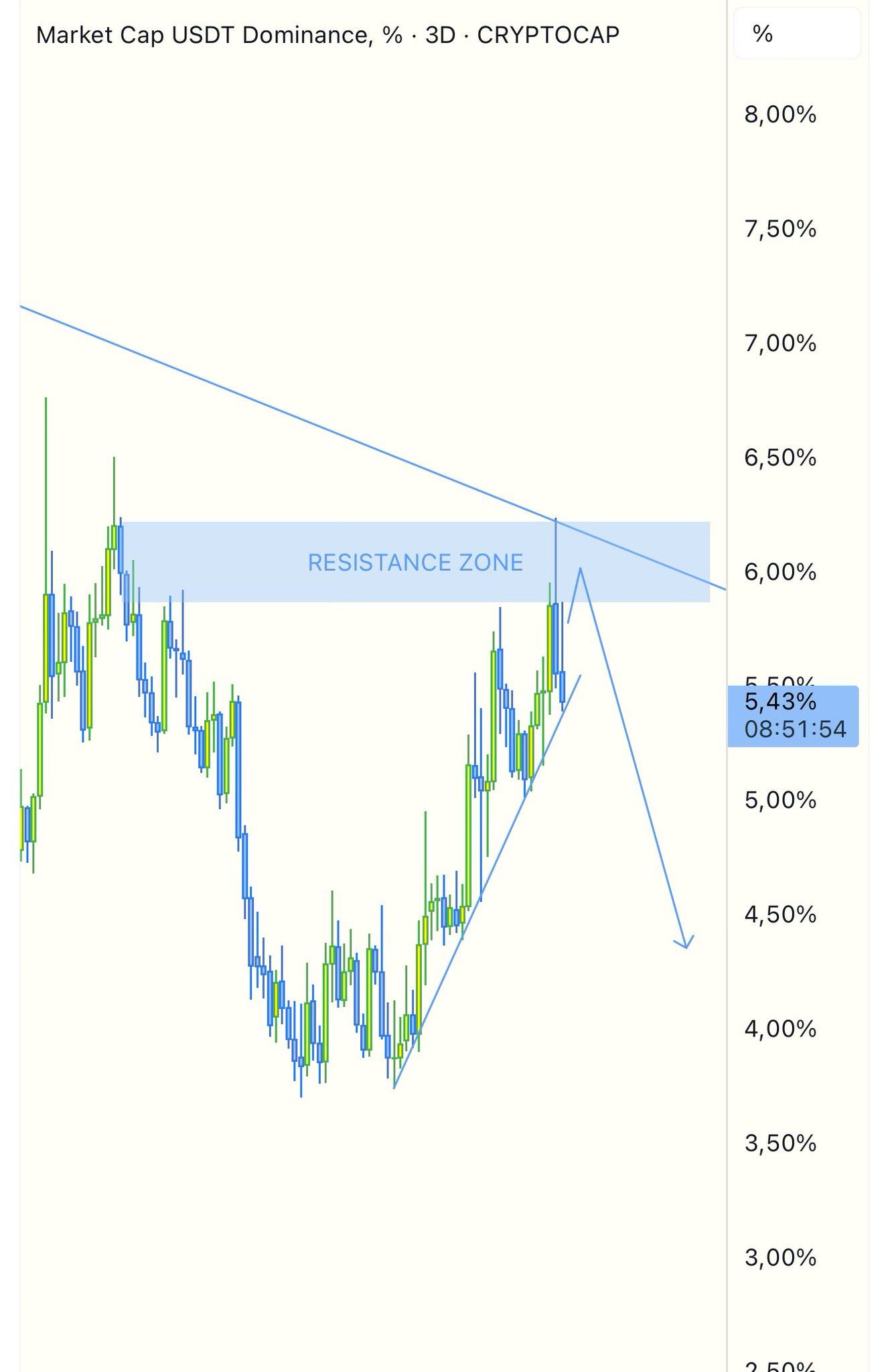
Another analyst also stressed that the USDT.D and USD Coin dominance (USDC.D) have reached resistance, forecasting an incoming altcoin season. Doğu Tekinoğlu drew similar conclusions by observing the combined chart of BTC.D, USDT.D, and USDC.D.
As Bitcoin’s dominance climbs, investors are closely monitoring these technical and on-chain signals. The interplay between Bitcoin’s strength and stablecoin dynamics could dictate whether altcoins stage a comeback this summer or face further consolidation. For now, Bitcoin’s grip on the market remains firm.
Disclaimer
In adherence to the Trust Project guidelines, BeInCrypto is committed to unbiased, transparent reporting. This news article aims to provide accurate, timely information. However, readers are advised to verify facts independently and consult with a professional before making any decisions based on this content. Please note that our Terms and Conditions, Privacy Policy, and Disclaimers have been updated.
Bitcoin
Babylon’s TVL Drops 32% After Massive Bitcoin Unstaking
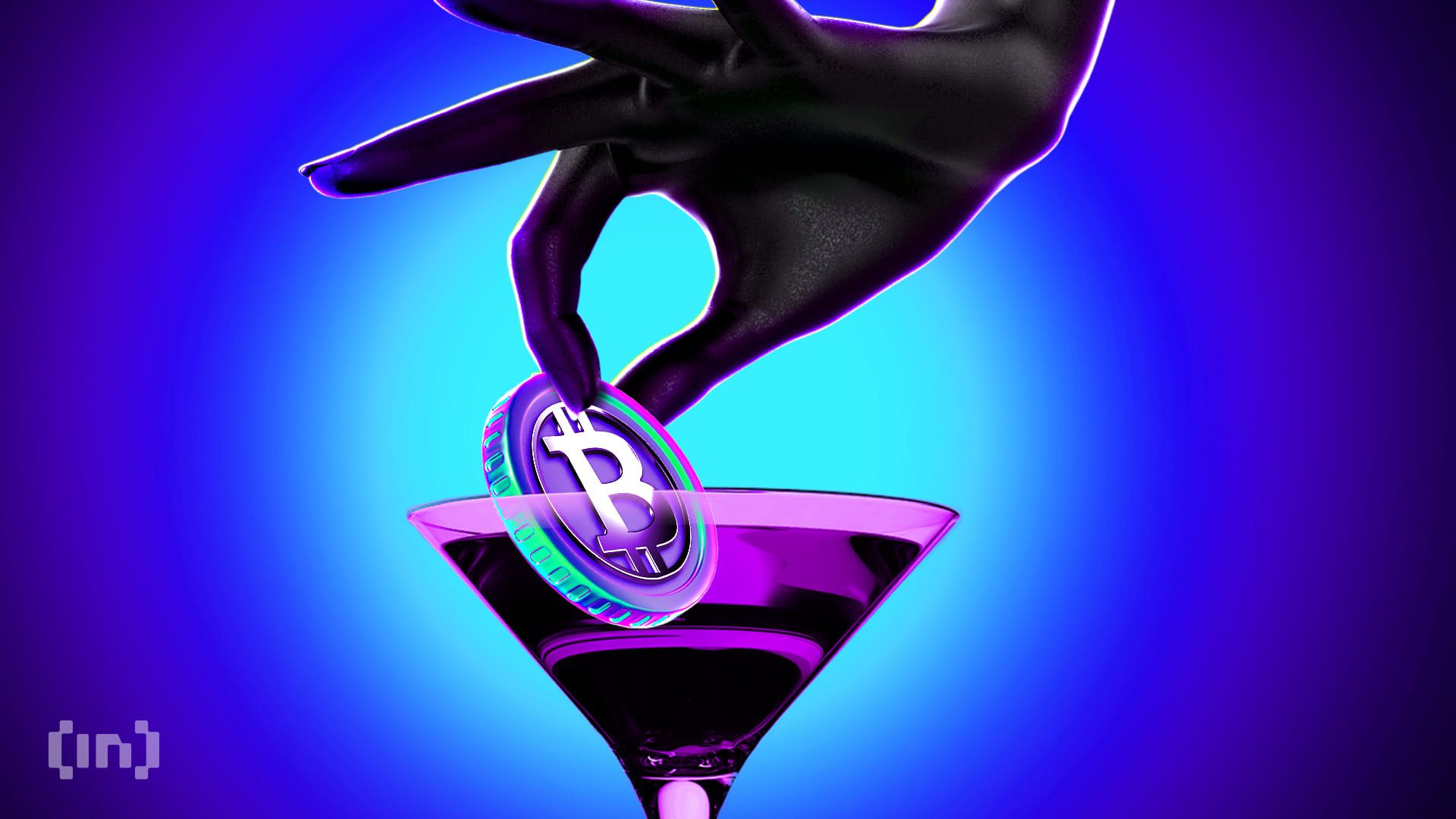
Babylon, a platform enabling native Bitcoin (BTC) staking, recorded a notable unstaking event on April 17. Approximately $1.26 billion worth of BTC was withdrawn from the protocol.
The move resulted in a significant decline in Babylon’s total value locked (TVL). Moreover, the price of its native token, BABY, also dipped.
Babylon’s TVL Drops 32% After Massive BTC Unstaking
Blockchain analytics firm Lookonchain alerted users about the unstaking on X (formerly Twitter).
“About 5 hours ago, 14,929 BTC($1.26 billion) was unstaked from Babylon,” the post read.

This move triggered a sharp drop in the platform’s TVL. According to data from DefiLama, Babylon’s TVL dropped from $3.9 billion to $2.6 billion in just a day, representing a decline of 32.7%. Moreover, only 31,502 BTC remain staked in the protocol at press time.
That’s not all. The BABY token was also not immune to market pressures. According to BeInCrypto data, the token depreciated by 9.8% over the past day alone. At the time of writing, the altcoin was trading at $0.8.

The unstaking led to widespread speculation about the platform’s stability and the broader implications for Bitcoin-based decentralized finance (DeFi) protocols.
“What’s going on. I don’t waste my time partaking in staking BTC, but this can be concerning. You don’t just see so much unstaking in such a short window,” a user said.
Nonetheless, Lombard Finance quickly moved to calm investor concerns. The Bitcoin restaking protocol, built on Babylon, clarified that the withdrawal was part of a planned transition to a new set of finality providers.
“To carry out the transition to our new set of Finality Providers, the Lombard Protocol has begun the process of unstaking BTC from the Lombard Finality Provider,” Lombard Finance stated.
The post emphasized that this process was a necessary step in the evolution of the platform. In addition, the company reassured investors that the withdrawn funds are expected to be restaked once the unbonding process concludes.
The unstaking event follows closely on the heels of Babylon’s airdrop earlier this month. 600 million BABY tokens—representing 6% of the token’s total supply—were distributed to early adopters, including Phase 1 stakers, Pioneer Pass NFT holders, and contributing developers.
Shortly after the airdrop, $21 million worth of Bitcoin was unstaked within 24 hours. This suggests a pattern of capital withdrawal that has intensified with the latest event.
Disclaimer
In adherence to the Trust Project guidelines, BeInCrypto is committed to unbiased, transparent reporting. This news article aims to provide accurate, timely information. However, readers are advised to verify facts independently and consult with a professional before making any decisions based on this content. Please note that our Terms and Conditions, Privacy Policy, and Disclaimers have been updated.
Bitcoin
What Good Friday Options Expiry Means for Bitcoin & Ethereum
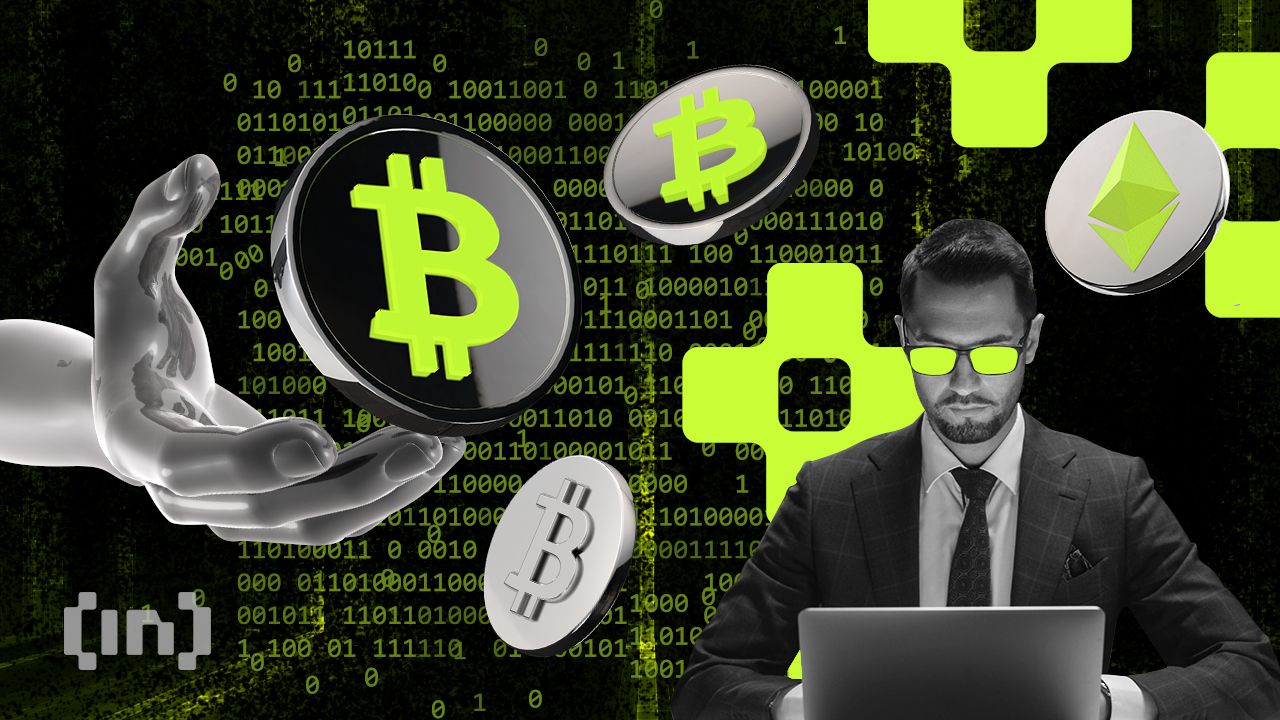
On Good Friday, over $2.2 billion worth of Bitcoin and Ethereum options contracts expire today.
It comes as crypto markets continue to reel from macroeconomic uncertainty. President Donald Trump is pressuring the Federal Reserve (Fed) to cut interest rates, but the chair, Jerome Powell, will not budge.
Over $2.2 Billion Options Expire Today
Today, April 18, amid Good Friday celebrations, 23,221 Bitcoin (BTC) options contracts will expire. The notional value for this Friday’s tranche of expiring Bitcoin options contracts is $1.966 billion, according to data on Deribit.
The put/call ratio is 0.96, suggesting a prevalence of purchase options (calls) over sales options (puts).
As the Bitcoin options expire, they have a maximum pain or strike price of $82,000; at this point, the asset will cause the greatest number of holders’ financial losses.

Similarly, crypto markets will witness the expiry of 177,130 Ethereum contracts, with a notional value of $279.789 million. The put-to-call ratio for these expiring Ethereum options is 0.84, with a maximum pain of $1,600.
This week’s options expiry event is slightly smaller than what crypto markets witnessed last week on Friday. As BeInCrypto reported, approximately $2.5 billion worth of BTC and ETH options expired then, with short-term dips bringing put demand.

Traders and investors must closely monitor today’s developments as options expiry could lead to price volatility. Nevertheless, put-to-call ratios below 1 for Bitcoin and Ethereum in options trading indicate optimism in the market. It suggests that more traders are betting on price increases.
Meanwhile, analysts at Deribit highlight low volatility and flat skew. While this suggests a calm market, historical data from CoinGlass suggests post-expiry price swings are common, potentially signaling an upcoming move.
“With volatility crushed and skew flat, is the market setting up for a post-expiry move?” they posed.
Blackswan Event Likely, Greeks.live Analysts Say
Analysts at Greeks.live shed light on current market sentiment, echoing the calm outlook. However, they note that the market is predominantly bearish to neutral. Traders expect continued choppy action before potentially revisiting $80,000 to $82,000.
As of this writing, Bitcoin was trading for $84,648, slightly above its strike price of $82,000. Based on the Max Pain theory, prices will likely move toward this strike price as options near expiry.

Citing a mild sentiment, Greek.live analysts ascribe the calm to Trump not putting out a lot of news this week. Nevertheless, they anticipate more trade wars, heightened uncertainty, and volatility.
“We expect the trade and tariff wars to be far from over, and the uncertainty in the market will continue for a long time, as will the volatility in the market,” Greeks.live wrote.
They also ascribe the outlook to Powell’s comments, which created downward pressure as 100 bps rate cut expectations for the year were reduced. This led to crypto correlation with traditional markets.
Against this backdrop, Greeks.live says the probability of a black swan event is higher, where a rare, unexpected event that has a significant and often disruptive impact on the market occurs.
“…it is now a period of pain when the bulls have completely turned to bears, and investor sentiment is relatively low. In this worse market of bulls turning to bears, the probability of a black swan will be significantly higher,” they explained.
They urge traders to buy out-of-the-money (OTM) put options. An option is classified as out-of-the-money when its strike price is less favorable than the current market price of the underlying asset. This means it has no intrinsic value, only time value (the potential for it to become valuable before expiration).
Disclaimer
In adherence to the Trust Project guidelines, BeInCrypto is committed to unbiased, transparent reporting. This news article aims to provide accurate, timely information. However, readers are advised to verify facts independently and consult with a professional before making any decisions based on this content. Please note that our Terms and Conditions, Privacy Policy, and Disclaimers have been updated.
-

 Ethereum23 hours ago
Ethereum23 hours agoEthereum Investors Suffer More Losses Than Bitcoin Amid Ongoing Market Turmoil
-
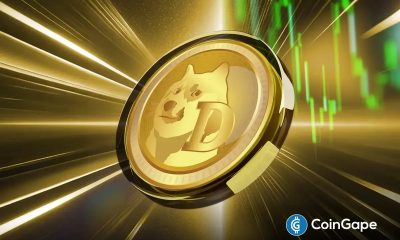
 Altcoin23 hours ago
Altcoin23 hours agoDogecoin Price Breakout in view as Analyst Predicts $5.6 high
-
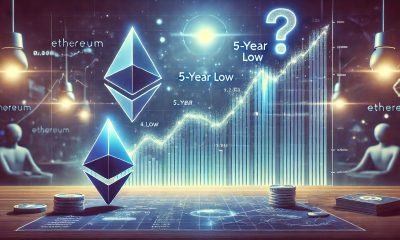
 Ethereum16 hours ago
Ethereum16 hours agoEthereum Fee Plunges To 5-Year Low—Is This A Bottom Signal?
-

 Altcoin22 hours ago
Altcoin22 hours agoTron Founder Justin Sun Reveals Plan To HODL Ethereum Despite Price Drop
-

 Market19 hours ago
Market19 hours agoEthereum Price Fights for Momentum—Traders Watch Key Resistance
-

 Altcoin19 hours ago
Altcoin19 hours agoExpert Predicts Pi Network Price Volatility After Shady Activity On Banxa
-

 Market17 hours ago
Market17 hours agoIs XRP’s Low Price Part of Ripple’s Long-Term Growth Strategy?
-

 Market23 hours ago
Market23 hours agoHedera Struggles Under $0.17 Despite Strong Support






